Ask Ethan: What happens to the singularity when a black hole evaporates?
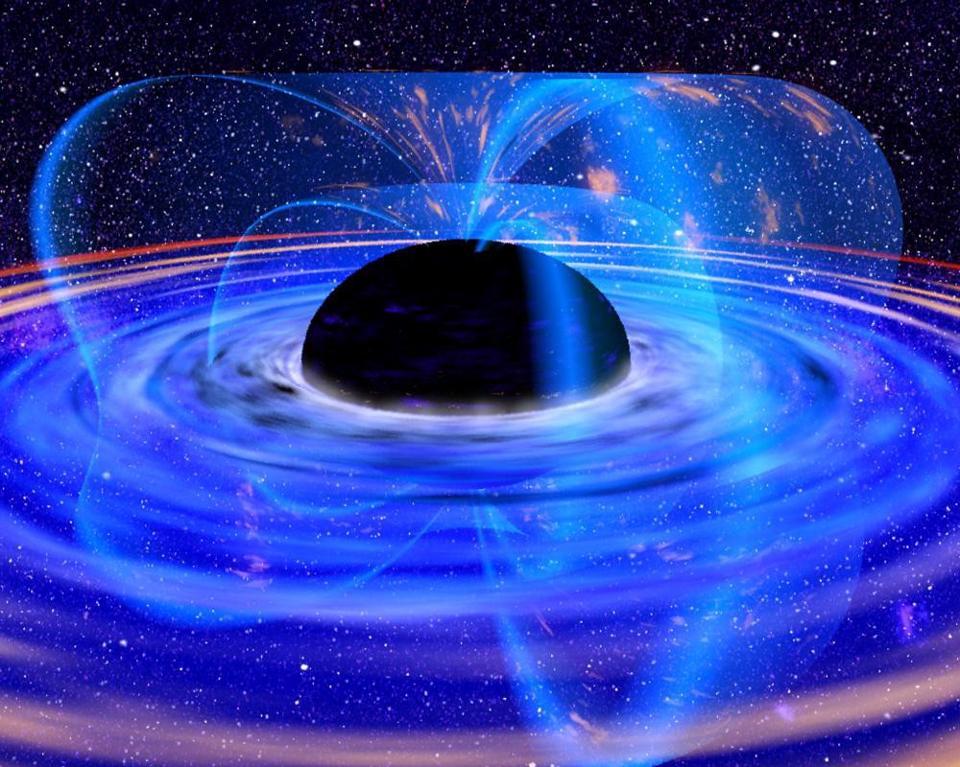
The black hole event horizon is a spherical, or spheroidal segment, from which nothing, not even light, can escape. But there is a prediction that outside the event horizon a black hole emits radiation.
It is difficult to imagine, given the diversity of forms taken by matter in the Universe, that for millions of years there existed only neutral atoms of hydrogen and helium. It’s probably about as difficult to imagine that some day, in quadrillions of years, all the stars will go out. Only the remains of such a living Universe will exist, including its most impressive objects: black holes. But they are not eternal. Our reader wants to know exactly how this will happen:
What happens when a black hole loses a sufficient amount of energy due to Hawking radiation, and its energy density is not enough to maintain a singularity with the event horizon? In other words, what happens when a black hole ceases to be a black hole due to Hawking radiation?
To answer this question, it is important to understand what the black hole really is.

Anatomy of a very massive star during its life, culminating as a type IIa supernova at the moment when nuclear fuel runs out in the core
Black holes are mainly formed after the collapse of the core of a massive star, which consumed all nuclear fuel, and ceased to synthesize heavier elements from it. With the slowing down and termination of the synthesis, the nucleus experiences a strong drop in radiation pressure, which only kept the star from gravitational collapse. While the outer layers often experience an out-of-control fusion reaction and explode the original star to a supernova, the nucleus is first compressed to a neutron star, but if its mass is too large, even the neutrons are compressed and go into a dense state, from which causes a black hole. A BH can also occur when a neutron star, in the process of accretion, takes away enough mass from the companion star, and passes the line necessary for turning into BH.
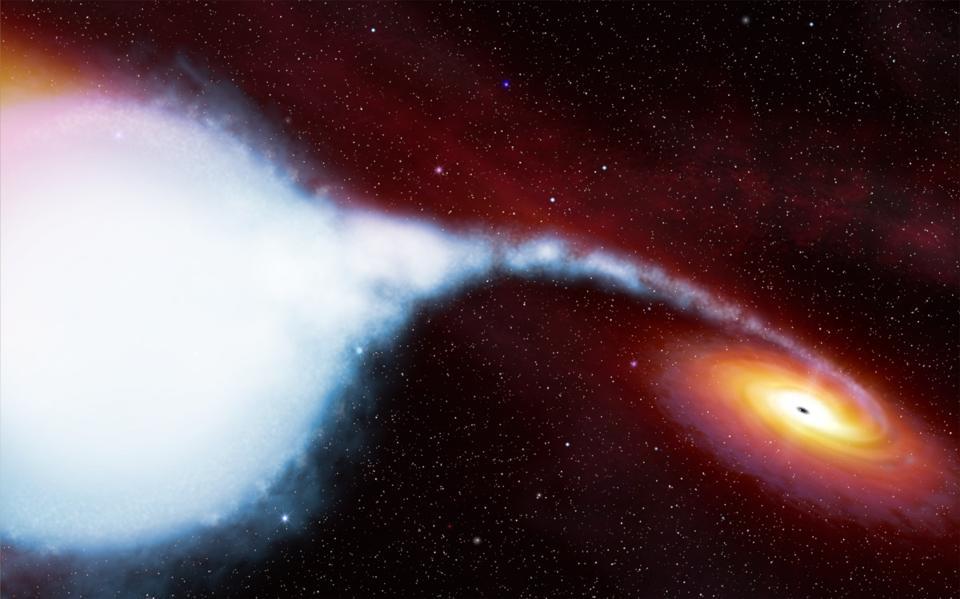
When a neutron star collects enough matter, it can collapse into a black hole. When a BH is gaining matter, an accretion disk grows in it and the mass grows, since matter falls beyond the event horizon.
From the point of view of gravity, all that is needed to become a BH is to collect enough mass in a sufficiently small volume, so that the light cannot escape from a certain area. Each mass, including the planet Earth, has its own escape rate: the speed that needs to be achieved in order to escape from gravitational attraction at a certain distance (for example, at a distance from the center of the Earth to its surface) from the center of mass. But if you gain enough mass so that the speed you would need to gain at a certain distance from the center of mass would be equal to light speed - then nothing can escape from it, since nothing can outrun the light.
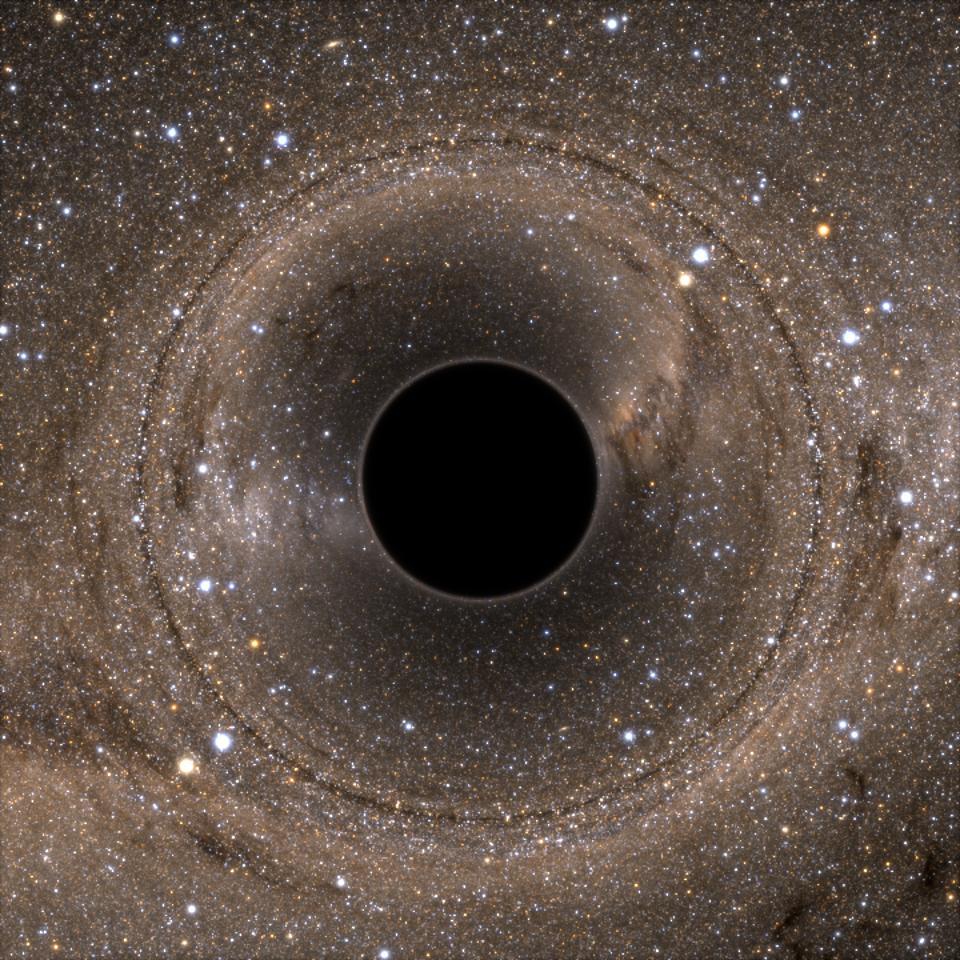
The black hole mass is the only factor determining the radius of the event horizon for a non-rotating isolated BH
This distance from the center of mass at which the escape velocity equals the speed of light — let's call it R — determines the size of the black hole event horizon. But the fact that under such conditions there is matter inside leads to less well-known consequences: all of it must collapse to a singularity. One can imagine that there is a state of matter that allows it to remain stable and have a finite volume within the event horizon — but this is physically impossible.
In order to exert an outward-directed impact, the particle inside must send the particle carrying the interaction away from the center of mass to the event horizon. But this transporting particle is also limited by the speed of light, and no matter where you are inside the event horizon, all world lines end at its center. For slower and massive particles it is still worse. As soon as a black hole appears with an event horizon, all the matter inside it is compressed into a singularity.
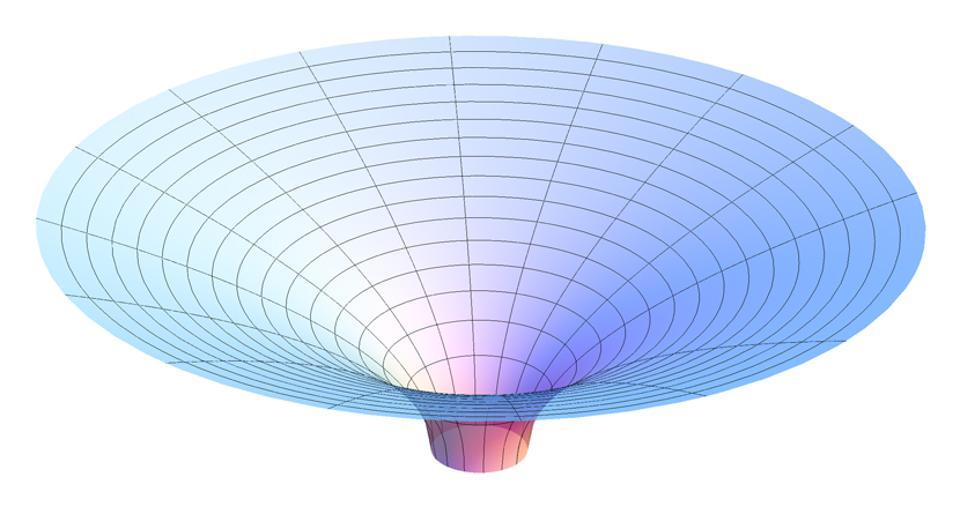
The outer space-time of the Schwarzschild BH, known as the Flambm paraboloid , is easy to calculate. But within the event horizon, all geodesic lines lead to a central singularity.
And, since nothing can escape, one could decide that the BH is eternal. And if it were not for quantum physics, that would be so. But in quantum physics there is a non-zero amount of energy inherent in the space itself: quantum vacuum. In a curved space, the quantum vacuum acquires slightly different properties than in a flat, and there are no regions where the curvature would be higher than in the vicinity of the black hole singularity. If we compare these two laws of nature - quantum physics and space-time from GTR around BH - we get the phenomenon of Hawking radiation.
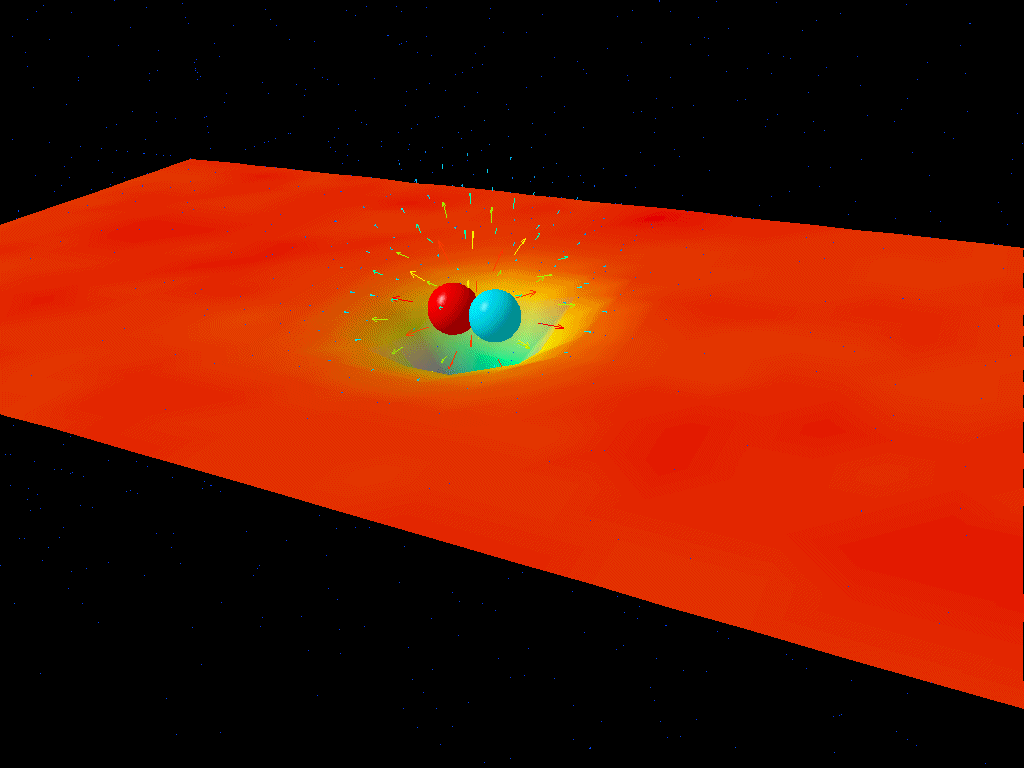
Visualization of quantum chromodynamics demonstrates how particle / antiparticle pairs arise from quantum vacuum for very short periods of time as consequences of the Heisenberg uncertainty principle.
If you carry out calculations according to quantum field theory in a curved space, you will get an amazing answer: the thermal radiation of a black body is emitted from the space surrounding the black hole event horizon. And the smaller the event horizon, the stronger the curvature of the space next to it, and the higher the Hawking radiation velocity. If our Sun were a black hole, its Hawking radiation temperature would be 62 nK. If we take the BH in the center of our Galaxy, the mass of which is 4,000,000 times larger, then the temperature will be 15 fK, only 0.000025% of the first.

Composite image of x-ray and infrared, which is visible BH in the center of our galaxy: Sagittarius A * . Its mass is 4 million times the solar one, and it is surrounded by hot gas emitting X-rays. It also emits Hawking radiation (which we cannot detect), but at a much lower temperature.
This means that small BH evaporate faster, and large ones live longer. Calculations say that the BH of the solar mass will exist for 10 67 years before it evaporates, but the BH in the center of our galaxy will live another 10 to 20 times more before evaporation. But the craziest thing in all of this is that, until the very last fraction of the very last second, the BH will maintain the event horizon, until the moment when its mass becomes zero.
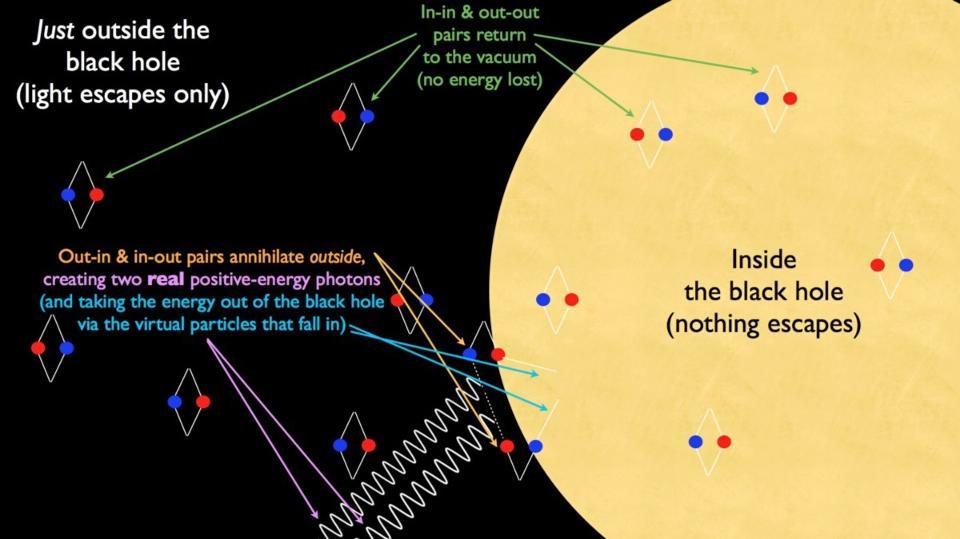
Hawking radiation inevitably follows from the predictions of quantum physics in a curved space-time surrounding the BH event horizon.
But the last second of the BH life will be characterized by a special, and very large release of energy. One second she will, when her weight drops to 228 tons. The size of the event horizon at this moment will be 340, that is, 3.4 × 10 -22 : this is the photon's wavelength with energy exceeding everything that has been obtained so far at the Large Hadron Collider. But at this last second, 2.05 × 10 22 J of energy will be released, which is equivalent to 5 million megatons of TNT. If a million nuclear bombs explode at the same time in a small area of space - this is the last stage of the black hole radiation.

In the process of how the black hole dries out in mass and radius, its Hawking radiation becomes more and more temperature and power
And what will remain? Only outgoing radiation. Where before, a singularity existed in space, in which mass, as well as, possibly, charge and angular momentum existed in an infinitely small volume, now there is nothing. The space is restored to the previous, non-singular state, after a gap that seemed infinite: this time is enough for everything that happened in it from the very beginning to happen in the Universe, trillions trillions of times. When this happens for the first time, there will no longer be any stars or sources of light in the universe, and there will be no one who could be present at this amazing explosion. But there is no "limit" for this. BH should evaporate completely. And after that, as far as we know, there will be nothing left but outgoing radiation.

On a seemingly eternal background of constant darkness, a single flash of light will appear: the evaporation of the last black hole in the universe.
In other words, if you could observe the evaporation of the last BH in the Universe, you would see empty space in which there are no signs of activity for 10,100 years or more. And suddenly there will be an incredible flash of radiation of a certain spectrum and power, escaping from one point in space at a speed of 300,000 km / s. And this will be the last time in the observable Universe, when some event is washed by its radiation. Before the last BH evaporates, in poetic language, the Universe will say for the last time: “Let there be light!”
Ethan Siegel - astrophysicist, popularizer of science, blog Starts With A Bang! He wrote the books Beyond The Galaxy , and Treknologiya: Star Trek Science [ Treknology ].
FAQ: if the universe is expanding, why aren't we expanding
All Articles